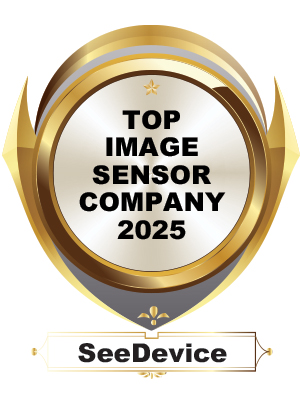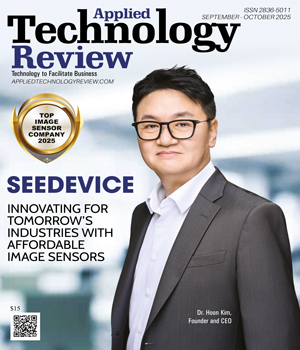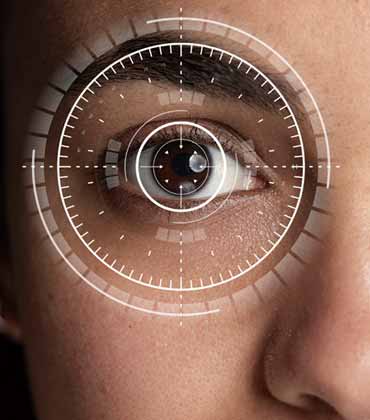THANK YOU FOR SUBSCRIBING
Applied Technology Review: Specials Magazine
Short-Wave Infrared (SWIR) technology has seen remarkable advancements in recent years, driving innovation across a range of industries, from smartphones and automotive to healthcare and security. While the benefits of this cutting-edge technology are undeniable, the high costs of development and implementation often put it out of reach for many industries, particularly smaller players or those with limited budgets. SeeDevice Inc. is breaking this mold by blending advanced capabilities with affordability The company offers a sensor that detects a wide range of wavelengths using a unique, silicon-based CMOS process. The result is a game-changing SWIR solution that’s transforming sectors from agriculture to healthcare, gaming, and automotive, all without the high costs typically associated with such advancements. A VISION THAT BEGAN ALMOST A DECADE AGO SeeDevice Inc. was founded nearly a decade ago by Dr. Hoon Kim, whose deep experience in technology and research laid the groundwork for the company’s innovation. Before establishing SeeDevice, Dr. Kim served as a professor at the University of Utah and as the director of Nano Quantum Devices Center at KETI (Korea Electronics Technology Institute). With a strong academic background and a proven track record in technological development, Dr. Kim’s move into the private sector was driven by his desire to create practical, scalable solutions for industries in need of advanced imaging technologies. His journey began with the aim of bridging the gap between high-performance imaging sensors and the cost-prohibitive technologies that were limiting their widespread adoption. Prior to SeeDevice’s inception, most image sensors capable of detecting wavelengths across the electromagnetic spectrum relied on rare, expensive materials such as indium gallium arsenide or germanium. These materials were costly and difficult to scale, limiting their availability and affordability for many applications. Dr. Kim’s breakthrough came when he developed a patented technology based on pure silicon. By incorporating the quantum tunnelling effect and plasmonic field enhancement into his design, he was able to create a CMOS image sensor capable of detecting wavelengths from the X-Ray range all the way to short-wave infrared. This groundbreaking sensor has since set SeeDevice apart from competitors and opened new possibilities in imaging. QUANTUM-DRIVEN INNOVATION SeeDevice’s ability to detect such a broad spectrum of wavelengths with precision and affordability makes it unique. The company’s sensors are based on a quantum-driven innovation that combines two fundamental concepts: the quantum tunnelling effect and plasmonic field enhancement.
Wearable Bioelectronic Devices
ZetrOZ, a government-backed company, is a pioneer in developing wearable mechanical biologic devices, the first to be approved by the FDA for treating soft tissue pathology. Unlike many pharmaceutical devices, the company’s technology addresses the root cause of soft tissue injuries and underlying inflammatory responses. Its wearable devices utilize long-duration ultrasound stimulation, also known as sustained acoustic medicine (SAM). ZetrOZ expanded its platform over the years to include new FDA-approved indications and technologies, resulting in effective and rapid treatment delivery. “We focus on healing rather than just inhibiting the pain response,” says Dr. George K. Lewis, president of ZetrOZ. The company strives to help more than 100 million American patients by providing them with mechanical devices that address ailments with insufficient treatment alternatives. ZetrOZ has also achieved significant milestones, including the launch of SAM 2.0 technology, the first FDA-cleared prescription home-use mechanical biologics, and the approval of its wire-free SAM X1 product line. ZetrOZ’s product portfolio also features the SAM 2.0 and the SAM X1, which use wired and wireless technology, respectively. SAM X1 stands out as a noteworthy innovation as it provides untethered mechanobiology treatment without the use of bulky wires, thereby gaining considerable market traction.
LED Color Sensor Solution
A one-size-fits-all approach is ineffective in LED testing. To develop solutions that meet high-quality standards, it is essential to pay close attention to customers’ needs and drive continuous innovation. FINN Test Electronics (FTE) is a leading industry player that develops quality LED testing sensors with unmatched precision. Its innovative products are used for test and measurement environments within the electronics and manufacturing services sectors. The comprehensive range of FINN LED sensors provides test solutions for many light sources on any test platform— functional, in-circuit or stand-alone. Innovation is embedded in FTE’s DNA. The journey began with its sister company, Test Coach, which develops testing programs and conducts tests on circuit boards for the electronics manufacturing services industry. The growing demand for testing LED sensors on boards led to a situation where the existing solutions failed to fulfill customer needs. FTE took charge and created products that consistently ensured elevated levels of client satisfaction.
CXO INSIGHTS

The Future of Human Interaction with Consumer Electronics: Meeting the Sensor Needs
Neomar Giacomini, Industry Partnerships - Advanced Development and Innovation, Whirlpool [NYSE: WHR]

IoT Sensor Networking with Lorawan
Stacy Lacy, CTO, Invista

Maximizing Efficiency and Reliability: The Benefits of Using Geographic Information System (GIS) for Utility Infrastructure Management
Tracey Foster Milton, Director Of Gis And Asset Management, Waggoner Engineering

Navigating the Future: Geospatial Technology's Impact on Transportation Design
Matt Laluzerne, National Director Of Business Development And Geospatial Services, Mckim & Creed

The Right Leadership Style For Todays Workforce
Lou Windsor, Project Manager, Global Information Technology, Aviagen

Virtual Sensor Innovation Drives Higher Productivity
Russell Dover, General Manager, Service Product Line, Lam Research Corp. [Lrcx: Nasdaq]

Blending Tradition with Innovation: Navigating Sales Strategy, Sustainability and Technology
Dave Gonnella, Vice President Of Sales, Gonnella Baking
IN FOCUS
The Expanding Horizons of Image Sensor Innovation
The image sensor industry is innovating rapidly, enhancing applications in consumer, industrial, automotive, and healthcare sectors through improved CMOS architectures, AI integration, and expanded spectral sensing capabilities.
Image Sensors as the Backbone of Modern Innovation
Image sensors, essential in devices from smartphones to satellites, transform light into electrical signals, revolutionizing photography, security, and medical imaging through advanced technology and applications.
EDITORIAL
Transforming Industries with Next-Gen Image Sensors
Image sensors are the backbone of modern visual technology. As industries demand higher resolution, faster frame rates and low-light performance, sensor technology is evolving at an unprecedented pace. Innovations in pixel design, AI integration and semiconductor materials are redefining what machines and humans can see. Reports state that the global image sensors market size, valued at $25.07 billion in 2024, is projected to reach $26.75 billion by 2034, growing at a CAGR of 6.65 percent. Fueling this growth are several technological developments. Advanced CMOS and stacked architectures enable higher resolution and faster image capture. AI and computational imaging allow sensors to process and enhance images in real time, improving accuracy and low-light performance. Specialized sensors for automotive and industrial applications further enhance safety, automation and efficiency across robotics, ADAS and machine vision systems, driving innovation across multiple industries. This edition of Applied Technology Review highlights innovations that are transforming industries and opening new opportunities. It features thought leadership articles from industry experts, including Cleber Redondo, 3D director at NBCUniversal and Pete Hogan, senior vice president of information technology at Compana Pet Brands who share their insights on industry trends, challenges and the road ahead. This edition also features SeeDevice, a leading innovator in high-performance, cost-effective SWIR image sensors that are advancing imaging across industries including healthcare, agriculture, gaming, and automotive. We hope this edition inspires you to explore emerging technologies and leverage them to strengthen your competitive edge.












